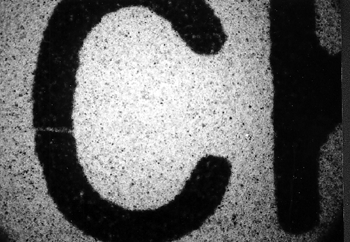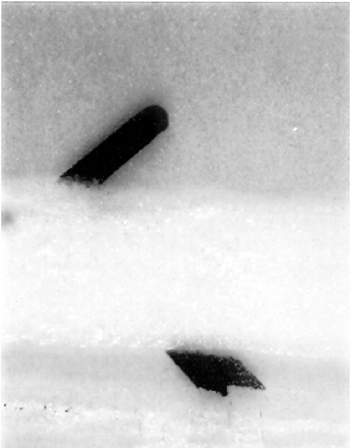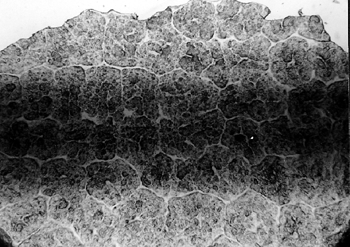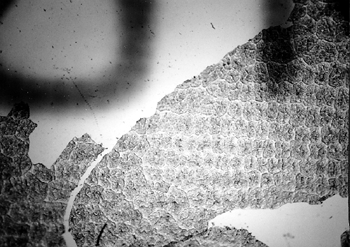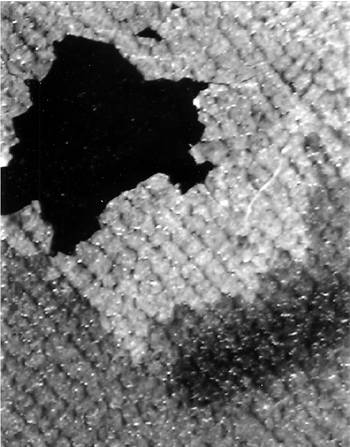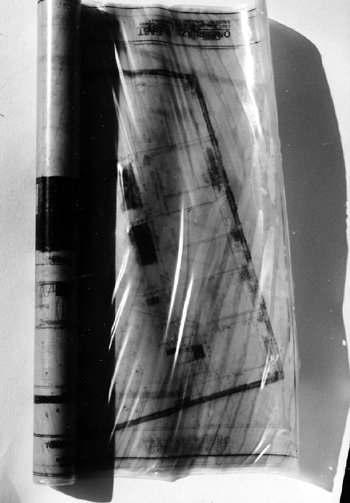PERMANENCY OF REPROGRAPHIC IMAGES ON POLYESTER FILMHANNA SZCZEPANOWSKA, & WAYNE WILSON
5 5. DETERIORATION OF RECORDS ON POLYESTER FILM5.1 5.1 TYPES OF DAMAGEThe examined records exhibited various changes that resulted in information loss and/or total record destruction. Some of these changes were caused by poor archival practices, while others resulted from inherent qualities of the materials used for recording. It was observed that older records produced more pronounced discoloration, often combined with emission of peculiar soaplike odors. The following categories of deterioration were noted: discoloration; residue and odors; blistering and separation of emulsion; and image transfer and ink smudges. 5.1.1 5.1.1 DiscolorationDiscoloration was the prevailing type of damage. All other types occurred on a much smaller number of the records. The records examined were unevenly discolored overall. However, there is no apparent correlation between the type of imaging and the discoloration of the records. There was some correlation between the discoloration and the age of records. Older records, created in the mid-1960s, were generally more severely discolored, and residues and odors were more prominent. The degree of discoloration in many cases was more intense in the center than on the margins, excluding such factors as oxidation (figs. 8a–8b).
Most of the discoloration was associated with diazotype processing. Discoloration is a result either of slow oxidation of the coupler and the photolysis of the diazo compounds or of the presence of acids. The o-hydroxycarboxylic acids added to the coating (sensitizing solution) to prevent its premature coupling can cause background (nonimage area) discoloration of the prints if used in excess (Kosar 1965). 5.1.2 5.1.2 Residue and OdorsThe formation of a powdery residue was noted mostly on older records (at least 20 years old). In many cases, the residue was accompanied by a distinctive soaplike odor. Microscopic examination did not reveal any particular type of damage or any characteristic features that could be attributed to or connected with the residue formation. The pattern of the residue suggested that it might have been formed after a brief exposure to high humidity, resulting in the breakup of the coating layer. If such exposure occurred, it was not indicated by the microscopic examination. 5.1.3 5.1.3 Blistering and Separation of EmulsionThe separation of the emulsion was dramatically evident on an older record, created in 1974. Microscopic examination revealed that the emulsion was poorly manufactured, resulting in the formation of “alligator skin” (figs. 9a–9d). Interestingly enough, the emulsion did not separate from the polyester film in the expected pattern, following the weak areas of the emulsion. Instead it separated in flakes, revealing a clear layer underneath. The other side of the film was smooth and shiny, indicating the photosensitive layer of the diazo type reproduction (see fig. 7).
5.1.4 5.1.4 Image Transfer and Ink SmudgesImage transfer is a classic example of the effect of poor storage on archival material. This type of damage was directly related to the type of storage enclosure in which the film was placed (fig. 10a). The enclosure was made of plasticized polyvinyl chloride, which released the plasticizer di-octal-phthalate (DOP). DOP accumulates on both sides, on the surface, and dissolves ink and coatings, resulting in image transfer. The process irreversibly damages the records (fig. 10b).
Another known reason for image transfer and smudges is interaction of organic solvents with toner in xerographic copies. As mentioned earlier, solvents are traditionally used in xerographic processes to ensure adhesion of coatings to the polyester film base. The residual solvents in the coatings interact with toners, resulting in softening of the ink used in creation of an image. Xerox Corporation experimented with aqueous-based coatings to eliminate the problem of solvent-toner interaction. However, the experimental film, aqueous double matte film, never reached the market. |
